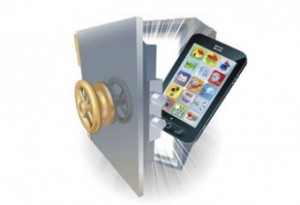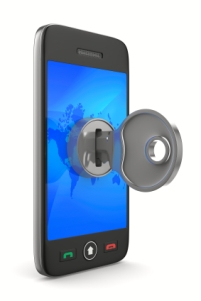The marketplace and technology giant is bringing encryption back after considerable consumer upset.
Amazon.com has now announced that it will be returning its encryption mobile security feature to its Fire tablets following complaints and upset from privacy advocates and customers that accused the massive online marketplace of quietly slipping the security option off the devices with its latest operating system release.
A spokesperson for the company promised that the feature would be returned to the OS in the spring.
Robin Handaly, spokesperson for Amazon.com, explained that “We will return the option for full-disk encryption with a Fire OS update coming this spring.” The decision to remove the encryption component of the Fire operating system’s mobile security fell into the spotlight quite suddenly this week. Amazon explained that the feature had been removed in one of its Fire OS versions that first started shipping in the fall of 2015 because there weren’t many customers who had used it in previous versions.
This mobile security feature scramble’s the device data so it is accessible only to someone who has entered a password.
 The encryption feature was built into previous versions of the Fire operating system and blocked access to the contents of the device to anyone who did not know the correct password. According to Bruce Schneier, a widely recognized cryptologist, Amazon’s choice to take down this encryption was “stupid.” Schneier was one of the large number of people and groups who were public about their criticism of Amazon’s removal of the encryption security and who publicly requested that the company bring it back.
The encryption feature was built into previous versions of the Fire operating system and blocked access to the contents of the device to anyone who did not know the correct password. According to Bruce Schneier, a widely recognized cryptologist, Amazon’s choice to take down this encryption was “stupid.” Schneier was one of the large number of people and groups who were public about their criticism of Amazon’s removal of the encryption security and who publicly requested that the company bring it back.
Amazon isn’t the only one that has been caught up in struggles with regards to mobile device security. Apple has also been facing several legal battles with regards to whether or not they should be required to unlock iPhones involved in criminal cases, including the case involving Rizwan Farook, one of the San Bernardino shooters.
This week, Amazon.com joined many other large tech companies when it added its signature to a court brief that was created to encourage a federal judge would take Apple’s side and not require that company to write code that would break through the mobile security of the iPhone used by Farook.
GfK report highlights worries over the security of new payment services
Security is still a major concern for consumers that are interested in mobile payments. While mobile transactions account for only a small portion of commerce overall, they are becoming more popular among consumers throughout the world. While this popularity is growing, consumers are still concerned how new payment platforms will protect their financial information. According to a new report from GfK, a prominent market research firm, these security concerns could slow the adoption of mobile commerce among consumers.
Few consumers are comfortable with the security offered by mobile commerce platforms
According to the report from GfK, mobile payments only account for 3% of all transactions being made in the United States. The majority of consumers prefer to use their debit cards to pay for goods and services. Not only are consumers more comfortable with conventional payment solutions, they also believe that mobile payments services are not secure enough. Approximately 52% of consumers believe that new payment services are not able to keep their personal information secure. Only 16% believe that mobile commerce services are more secure that more conventional forms of payment.
More companies are working to improve the security of mobile payments services
 Security concerns are nothing new for the mobile commerce industry. Over the past several years, consumers have expressed their worry that new payment services were simply not able to protect their information. The companies responsible for these services have been working to make them more secure, with many now making use of biometric technology. This technology leverages biological information to protect payment services. Consumers can protect their information with something as simple as a fingerprint, which has done much to secure confidence in mobile commerce among consumers.
Security concerns are nothing new for the mobile commerce industry. Over the past several years, consumers have expressed their worry that new payment services were simply not able to protect their information. The companies responsible for these services have been working to make them more secure, with many now making use of biometric technology. This technology leverages biological information to protect payment services. Consumers can protect their information with something as simple as a fingerprint, which has done much to secure confidence in mobile commerce among consumers.
Younger consumers are less concerned about security and privacy issues
Notably, younger consumers, those between the ages of 18 and 24, are less concerned about security and privacy issues. Approximately 33% of these consumers say they are completely confident in the security of mobile payments services. They believe that new payment services are not only secure, but also very convenient and allow them to shop and purchase products no matter where they may be without having to rely on traditional forms of commerce.
 The encryption feature was built into previous versions of the Fire operating system and blocked access to the contents of the device to anyone who did not know the correct password. According to Bruce Schneier, a widely recognized cryptologist, Amazon’s choice to take down this encryption was “stupid.” Schneier was one of the large number of people and groups who were public about their criticism of Amazon’s removal of the encryption security and who publicly requested that the company bring it back.
The encryption feature was built into previous versions of the Fire operating system and blocked access to the contents of the device to anyone who did not know the correct password. According to Bruce Schneier, a widely recognized cryptologist, Amazon’s choice to take down this encryption was “stupid.” Schneier was one of the large number of people and groups who were public about their criticism of Amazon’s removal of the encryption security and who publicly requested that the company bring it back.
 Security concerns are nothing new for the mobile commerce industry. Over the past several years, consumers have expressed their worry that new payment services were simply not able to protect their information. The companies responsible for these services have been working to make them more secure, with many now making use of biometric technology. This technology leverages biological information to protect payment services. Consumers can protect their information with something as simple as a fingerprint, which has done much to secure confidence in mobile commerce among consumers.
Security concerns are nothing new for the mobile commerce industry. Over the past several years, consumers have expressed their worry that new payment services were simply not able to protect their information. The companies responsible for these services have been working to make them more secure, with many now making use of biometric technology. This technology leverages biological information to protect payment services. Consumers can protect their information with something as simple as a fingerprint, which has done much to secure confidence in mobile commerce among consumers.